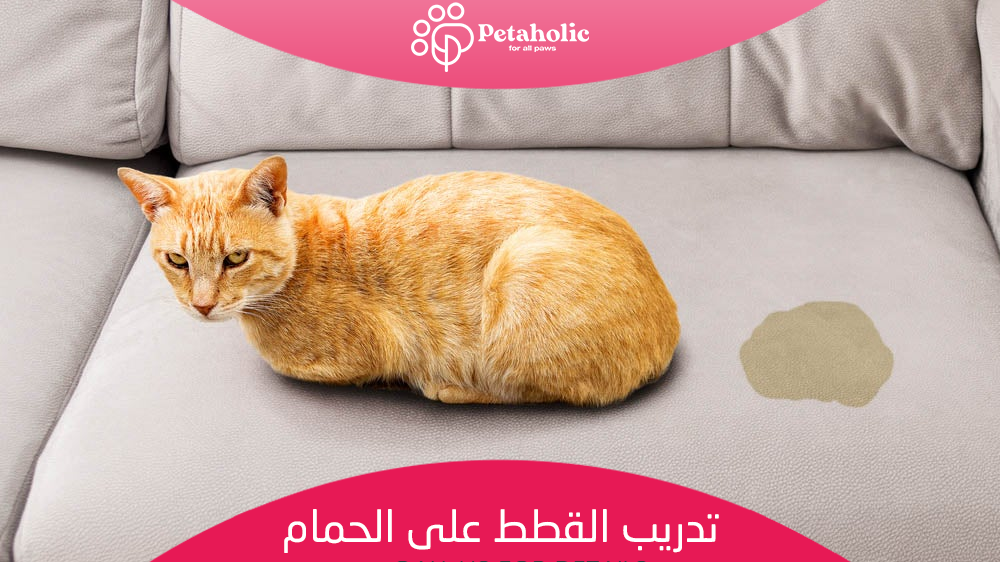
If you're reading this guide now, you probably have a new feline friend or will have one very soon, and you need to know how to potty train a cat in a litter box. Fortunately, litter box training is easy for most cats; Because domestic cats are clean mammals. Their ancestors buried their feces to hide from predators, and cats have retained this trait to this day, instinctively burying their feces in litter boxes. In this guide you will learn how to train cats to use a litter box. You can also browse the Petaholic store and buy all the necessary tools and supplies at the best prices.
What are the most effective proven methods for training cats to use the toilet in the litter box?
Here are the most effective proven methods for toilet training cats:
Provide the necessary tools
At a minimum, you will need a litter box and cat litter for potty training your cat. You can also place a mat under the litter box to reduce mess. Choose fine, unscented, clumping sand. If you have a cat with mobility issues, choose a box with low sides that will be easy for them to get in and out of. Place the crate in a quiet, warm, low-traffic area of your home. If you have multiple floors in your home, place a box on each floor. If you have more than one cat in the house, there should be more than one litter box as well.
Pay maximum attention to the location of the litter box
Litter box training your cat can be simple, and should start by looking at things from her point of view; When you go to a restaurant or somewhere, a common question you might ask is, "Where is the bathroom?" Although your cat can't talk like humans, she may wonder the same thing. Placing the litter box in the basement or rooms away from the main areas of the house may deter your cat from making the trip there. So, try to find a location that is comfortable for you, but that your cat can also reach easily. Once you've chosen the perfect spot, familiarize your cat with the location of the box so she'll be sure to remember it when it's time to go potty.
It's also important to move your cat's food away from the litter box! Imagine if your bathroom was next to a kitchen table, or when a restaurant host seated you next to the bathroom! If you have a smaller living space, that's no problem, just make sure you leave enough space between the cat's food and the litter box.
Take your cat's size into consideration
For kittens, providing a litter box that is too large may cause them to use it as a playground rather than a place to relieve themselves. Conversely, if you have a larger cat, providing a small litter box can cause overflow or accidents outside the box. Note that these external incidents may be a statement from your cat letting you know something about the box does not meet her standards. It may take a few tries with different sizes of boxes, but eventually you'll find just the right shape and size.
Also, some cats prefer a little privacy, and a covered litter box can provide the perfect haven to bury their feces. Other cats are not so humble, so if they seem reluctant to enter the litter box, you can always remove the lid.
Help your cat become familiar with the box
Once the litter box is set up, it's time to introduce your cat to it. Place your cat in the box first to allow for exploration and sniffing. Avoid interacting with her or distracting her while she's in the box, and don't move it once you've shown her where it is. Place your cat in the box after meals and naps to encourage him to eliminate waste naturally. Additionally, any time you see your cat sniffling or bending over as if she's about to relieve herself, is a great time to jump in and bring her into the litter box to litter train her, so be vigilant.
If you have just adopted a cat or have recently moved to a new home, set yourself up for success by keeping your cat confined to an area where he is accustomed to his surroundings. This will restrict roaming and help train the kitten to potty in the litter box. For kittens, move their front paws back and forth in a scratching motion to give them a little extra help. It's amazing how kittens as young as 3 to 4 weeks old seem to instinctively understand this movement.
Keep the box clean at all times
According to studies, cats have 20 million odor-sensitive cells in their noses, compared to only 5 million for humans. Therefore, the litter box must always be clean and not smelly so that your cat can use it every time. The frequency of cleaning depends on several factors:
- How many cats are in your house?
- How often do they relieve themselves?
- How big is the box?
Some cat owners prefer to clean the litter box daily, while others find that 3 to 4 times a week is sufficient. At Petaholic, we recommend daily sand shoveling to reduce urinary tract infections. As humans, many of us prefer to have perfumes or air fresheners in our bathrooms, but they can be a huge deterrent for your cat. If these strong odors create sensory overload for your cat, he will be less likely to use the litter box.
Be patient and positive while potty training your cat
While potty training your cat, there are bound to be accidents outside the box. Do not punish or reprimand your cat; Just clean up the mess with an organic cleaner and keep reinforcing the training. Cats will eventually be able to use the litter box, but sometimes it can take a while. When you see your cat using the box successfully, reinforce his behavior with rewards and praise.
Among the best products we recommend for you to contain the mess while training your cat to use the litter box:
What to do when the cat refuses to use the litter box?
Some cats can be very picky about the conditions in which they wish to relieve themselves. If you've followed the suggested instructions above, but your cat doesn't seem to be getting used to using the box, there may be a few possible explanations. For example, your cat may not like the following:
- The size or shape of the box.
- The smell or texture of sand.
- Fund website.
- Share the box with other cats.
- Lid on the box: Some cats may find it too restrictive. Alternately they may feel very exposed and prefer a covered crate.
- Box hygiene: We recommend scooping clumps of urine daily from the litter box, and washing it weekly.
You may need to experiment until you find the right combination of factors that will make your cat comfortable enough to use the litter box. You may also need to confine your cat to a small space, such as the bathroom, until she starts using the box regularly. But if you try all of this and are still struggling, consult your veterinarian. Sometimes, cats do not use the litter box for medical reasons. Some examples include:
- Urine Spraying: Kittens that have not yet been spayed may spray urine all over the house to mark their territory, even after they are fully litter box trained. Spaying your cat will often stop this behavior.
- Age: If you have an older cat, she may be dealing with joint pain or stiffness that makes accessing the box difficult. Consider whether the sides of the box are too high to climb comfortably, or whether your cat has to climb stairs or jump on something to get to the box.
- Stress or anxiety: If your cat has been using the box consistently over a period of time and then suddenly stops, there may be an underlying problem. Stress and anxiety can cause a cat to stop using the litter box, so consider whether there have been any major changes in the environment and speak to your vet.
- Medical problems: Often, stopping litter box use can be a sign of an underlying medical problem, such as a cystitis or urinary tract infection, that will need treatment. If you suspect an underlying medical problem, contact your veterinarian.
Among the best litter boxes that we recommend for your cat from our store:
Now that you know how to train cats to potty , and what is the easiest proven method, you are on the right path to a happy and harmonious relationship with the new member of your family. In our store you will find all the bathroom supplies that suit your cat's various needs and preferences.
You may also be interested in:

